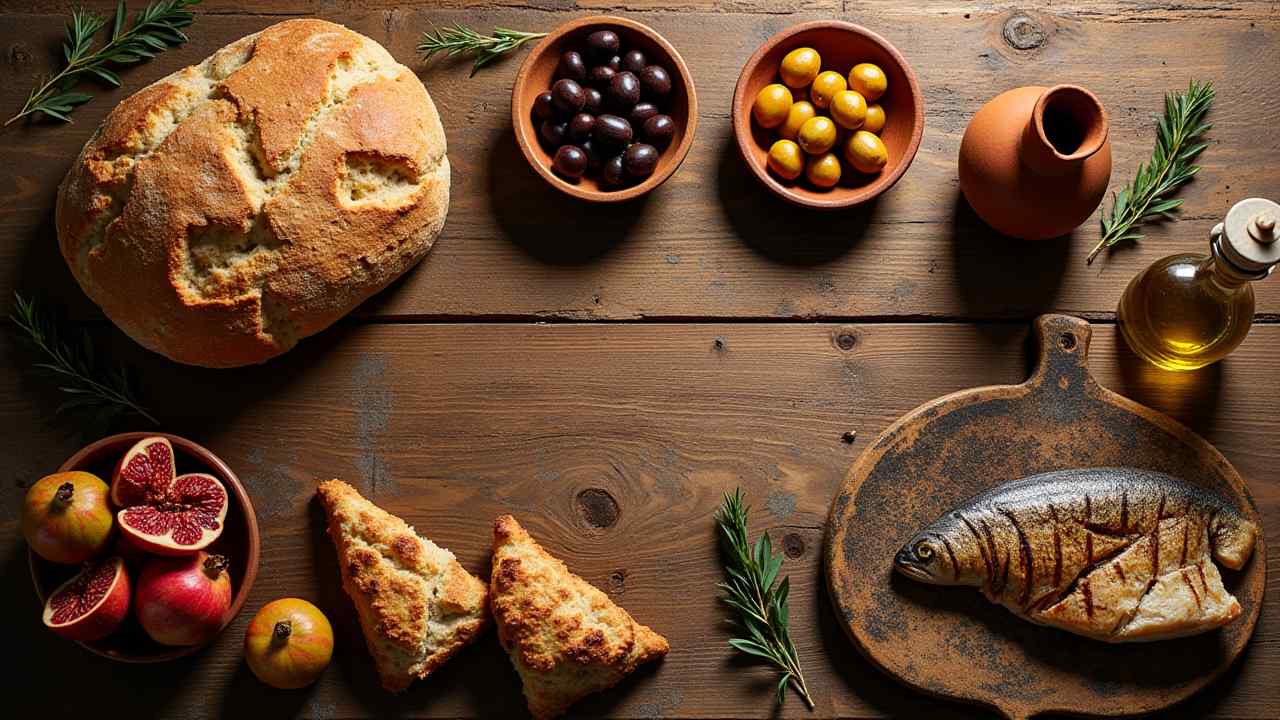
📖 What is the Biblical Diet? A Guide to Ancient, Healthy Eating
📖 What is the Biblical Diet? A Guide to Eating Like Our Ancestors 📖
In a world full of modern diet fads, many people are looking to the past for wisdom. This has led to a growing interest in the biblical diet. This is not a formal weight-loss plan. It is an eating pattern inspired by the foods and dietary laws of the Bible.
This approach focuses on eating whole, natural foods. These are the kinds of foods that were available in ancient times. It is a return to a simpler and less processed way of eating. It emphasizes nourishment and gratitude for food.
This guide will explore the principles of a biblical diet. We will look at the foods that are encouraged. We will also cover those that are avoided according to ancient laws. Let's journey back to this timeless way of eating. 🙏🏻
🤔 What Are the Core Principles of a Biblical Diet?
The biblical diet is built on a few core ideas. These principles are about eating food in its most natural state. They also reflect a mindful and spiritual approach to nourishment. The main principles are simple.
First, you eat whole, created foods. This means focusing on foods as they are found in nature. This naturally eliminates modern processed foods, artificial ingredients, and refined sugars. It is the original "clean eating" plan.
Second, a strict interpretation involves following the dietary laws from the Old Testament. This includes the distinction between "clean" and "unclean" animals. This is a key part of the traditional framework.
✅ What Foods Are Eaten on a Biblical Diet?
The foods of the biblical diet are fresh, wholesome, and delicious. Many are staples of the modern Mediterranean diet. The focus is on a variety of natural ingredients.
What Fruits and Vegetables are Mentioned?
The Bible mentions many fruits and vegetables. The "Seven Species" of the land of Israel are a great starting point. These include figs, olives, pomegranates, and grapes. 🍇 Fresh seasonal produce like these are staples. Lentils, cucumbers, and onions are also part of this diet.
Which Grains and Breads are Included?
Unlike many modern low-carb diets, grains are included. The focus is on ancient and whole grains. This includes barley, wheat, and spelt. These were often prepared as rustic, unleavened bread or naturally fermented sourdough. 🍞
What Are the "Clean" Meats and Fish?
The biblical laws in Leviticus are specific. "Clean" meats come from animals that have a cloven hoof and chew their cud. This includes beef, lamb, and goat. For seafood, only fish with both fins and scales are permitted. This includes fish like tilapia, cod, and salmon. 🐟
What About Healthy Fats, Dairy, and Honey?
Healthy fats are a key part of the diet. Olive oil is the most important fat source. 🫒 Dairy from goats and sheep, like yogurt and cheese, is also included. Raw honey is the primary sweetener. This is the diet from the "land of milk and honey."
🚫 What Foods Are Avoided on a Strict Biblical Diet?
The list of foods to avoid is based on the "unclean" laws. For someone following a strict biblical diet, these are completely off-limits. The most well-known restrictions are:
- Pork: All pork products, including bacon and ham, are considered unclean.
- Shellfish: All shellfish are forbidden. This includes shrimp, lobster, crab, and clams.
- Certain Fish: Fish without fins and scales, like catfish and eel, are avoided.
- Modern Processed Foods: By principle, all modern junk food, refined sugar, and artificial ingredients are excluded.
⭐ How Does This Compare to Modern Diets?
You may notice a strong similarity to another healthy diet. The biblical diet is essentially an ancient form of the Mediterranean diet. Both are rich in olive oil, fish, vegetables, and whole grains. The main difference is the specific clean and unclean food laws.
It also shares a focus on whole foods with the Paleo diet. However, Paleo excludes all grains, legumes, and dairy. The biblical diet includes all of these in their proper, whole form. It is a unique and ancient eating pattern.